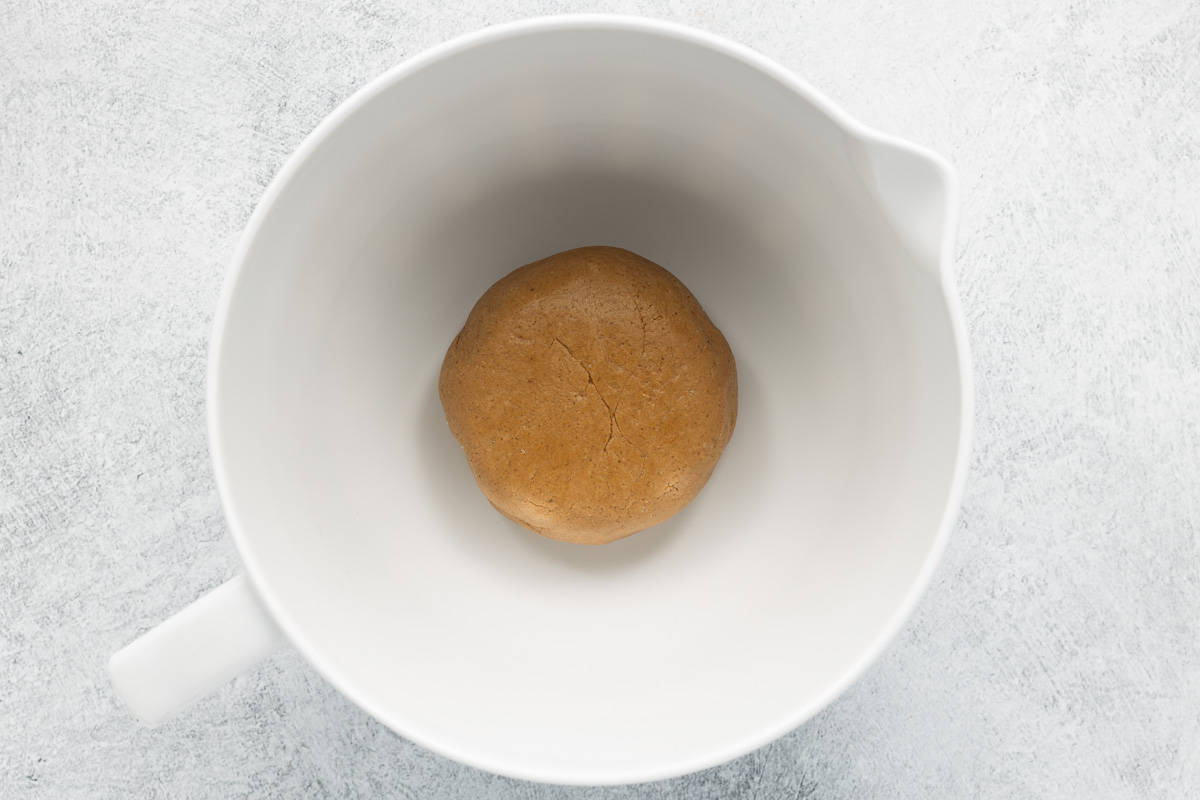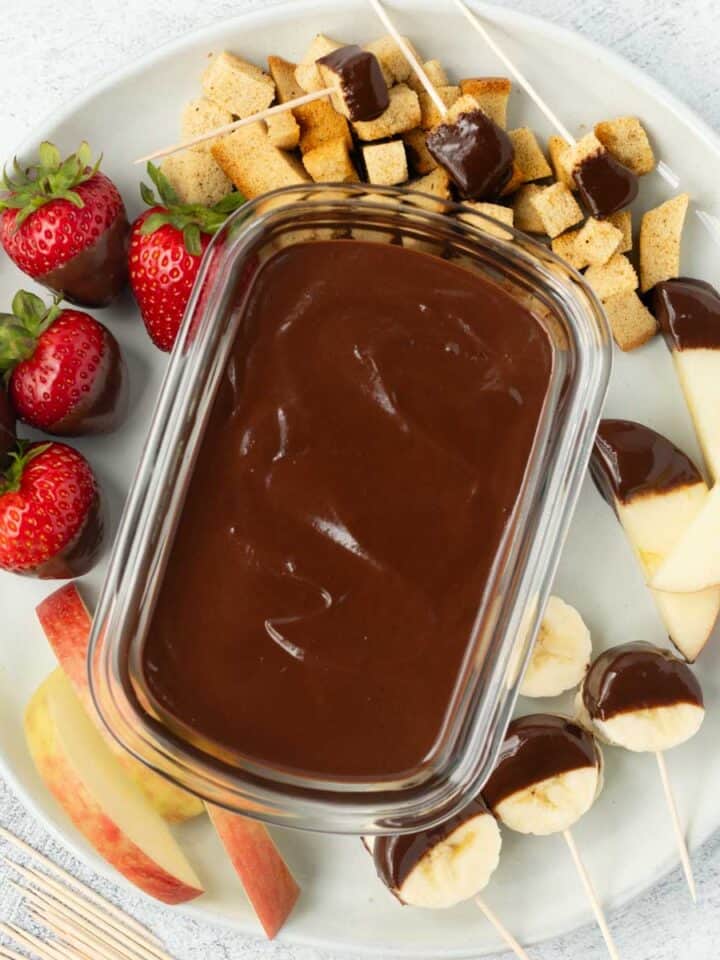If you prefer a healthier version of the soft and chewy snickerdoodle cookie, you're going to love this gluten-free protein snickerdoodle cookie recipe. With 6 grams of protein per serving, these cookies can help you reach your daily protein goals while you enjoy eating them!

Jump to:
What is a Snickerdoodle?
A traditional snickerdoodle is basically a sugar cookie with a cinnamon sugar coating. It has a chewy texture, a slightly tangy flavor, and can be made as a thick or thin cookie. The snickerdoodle is considered an American classic cookie that has been around since the late 1800s.
Nutritional Benefits
This recipe contains a combination of protein sources for a healthy snack:
- The protein from the egg is most easily absorbed by the body and is a complete protein source.
- The vegan protein powder and almond flour are incomplete protein sources. This means they do not contain all of the amino acids that your body needs.
It's a good idea to consume protein from a variety of sources, particularly if you lean towards a plant-based diet that does not include much animal-based protein. The healthy ingredients in these snickerdoodle protein cookies cover all the bases!
Ingredients
This recipe uses a blend of protein powder and almond flour in place of regular flour. When combined with the rest of the ingredients, they create the perfect cookie dough consistency that isn't too sticky or dry.

Dry Ingredients
- Orgain Organic Vegan Plant-Based Protein Powder - I recommend using the vanilla bean flavor.
- Almond flour - look for super-fine almond flour as this is best suited for baking.
- Cream of tartar - a good snickerdoodle cookie has a chewy texture. Cream of tartar is the secret ingredient for creating this most amazing texture.
- Baking powder - look for one that is aluminum-free.
- Ground cinnamon - look for the Ceylon variety to avoid concerns with toxins.
- Pinch of salt - any type of salt will do. I generally use Kosher salt.
Wet Ingredients
- Unrefined coconut sugar - this tastes similar to brown sugar, which works well in this recipe. It also has a lower glycemic index as compared to refined sugar.
- Large egg - look for pasture-raised eggs for a better nutrient profile.
- Vanilla extract - go for real vanilla extract for a better flavor that's better for you.
- Cashew butter - look for one that is unsalted, unsweetened, and does not contain industrial seed oil. I use an unrefrigerated natural cashew butter that needs to be mixed due to oil separation and has a pourable consistency.
How to Make this Protein Snickerdoodle Cookie Recipe
Before you begin, preheat your oven to 300℉ and line a rimmed baking sheet or cookie sheet with parchment paper. Using slightly lower heat than the standard 350℉ for baking cookies will prevent them from getting dry.

In a small bowl, add the dry ingredients.

Combine all of the dry ingredients and set aside.

In a large bowl, add the wet ingredients.

Combine the wet ingredients.

Add the dry ingredients to the wet ingredients and combine with a stiff spatula.

Once combined, knead the dough a few times with your hands.

Divide the dough into 16 pieces and form each one into a ball.

Roll each cookie dough ball in the cinnamon sugar mixture and place them on the baking sheet. Flatten each cookie to about 2.5 inches in diameter.

Place the cookies in the oven and bake for 7-9 minutes.

Let the cookies cool on the baking sheet for 10 minutes before removing them.

I hope you enjoy these perfectly soft and chewy protein snickerdoodle cookies!
Substitutions
- Almond butter can be used instead of cashew butter if preferred. If you want to stay true to the snickerdoodle cookie flavor, I would not recommend peanut butter as a substitute.
- Pure maple syrup can be used in place of unrefined coconut sugar, but the dough will be stickier. If you go with this option, chill the raw snickerdoodle cookie dough for about 20 minutes to make it easier to work with.
- If you are avoiding sugar entirely or eating low carb, you can substitute the unrefined coconut sugar with allulose. Allulose will not cause blood sugar spikes and has zero net carbs. Compared to other sugar substitutes, allulose tastes similar to real sugar, but it is not as sweet. Use ½ cup of allulose for this recipe. You can also use a different sugar substitute of your choice and adjust the amount accordingly.
- Using a protein powder with a snickerdoodle flavor instead of a vanilla flavor is also a good option. The type of protein powder you use can significantly change the texture of the cookie dough, so choose one that is plant-based for similar results.
Storage
It is best to store snickerdoodle protein cookies in an airtight container. They will stay fresh at room temperature for 5-7 days or 6 months in the freezer.
Variations
- If you prefer a thicker cookie, you can make 12 cookies instead of 16 cookies and bake them for 10-12 minutes.
- If you prefer your cookies to be less sweet, feel free to reduce the coconut sugar to ¼ cup instead. The dough will have the same consistency.
Top Tips
Use a natural cashew butter that needs to be mixed due to oil separation and has a pourable consistency. I use a jar that I have not refrigerated. Otherwise, I have to warm it a little in the microwave to get that pourable consistency. These tips will make the cookie dough much easier to work with.
FAQ
Classic snickerdoodle cookies are supposed to be soft and chewy. They can be made thin or thick, depending on your preference.
A snickerdoodle cookie is done when a toothpick comes out clean in the center. Check the cookies at the minimum baking time and remove them from the oven as soon as they are done. If your cookies come out crispy, they have been baked too long.
Related
Looking for other recipes like this? Try these:
Recipe

Protein Snickerdoodle Cookies
INGREDIENTS
Cinnamon Sugar Cookie Coating
- 1 tablespoon unrefined coconut sugar
- ½ tablespoon ground cinnamon
Dry Ingredients
- ¾ cup Orgain Organic Vegan Plant-Based Protein Powder - Vanilla Bean
- ¼ cup almond flour
- 1 teaspoon cream of tartar
- ½ teaspoon baking powder
- ½ teaspoon ground cinnamon
- a pinch of salt
Wet Ingredients
- ⅓ cup unrefined coconut sugar or ½ cup allulose
- 1 large egg
- ½ teaspoon vanilla extract
- ½ cup unsalted unsweetened natural cashew butter see notes
INSTRUCTIONS
- Preheat oven to 300℉ and line a baking sheet with parchment paper.
- Combine the cinnamon sugar cookie coating on a small plate.
- In a small mixing bowl, combine all of the dry ingredients and set aside.
- In a large mixing bowl, combine all of the wet ingredients. Add the dry ingredients to the wet ingredients and combine with a stiff spatula. Once combined, knead the dough a few times with your hands.
- Divide the dough into 16 pieces and form each one into a ball.
- Roll each cookie dough ball in the cookie coating and place them on the baking sheet. Flatten each cookie to about 2.5 inches in diameter.
- Bake for 7-9 minutes*, then let the cookies cool on the baking sheet for 10 minutes before removing.
NOTES
- Cashew butter - make sure to use a natural cashew butter that needs to be mixed due to separation. It's best to mix and use without refrigerating. Otherwise, you will need to microwave the nut butter to get a pourable consistency.
- If you prefer a thicker cookie, you can make 12 cookies instead of 16 cookies and bake them for 10-12 minutes.
- Nutrition facts do not include the cinnamon sugar coating as this is optional and the amount used varies significantly.
- If you use allulose instead of coconut sugar in the cookie dough, you can still use coconut sugar as a coating without causing a glucose spike. I tested this on myself when wearing a continuous glucose monitor (CGM) and eating two cookies did not cause any glucose rise at all! Since everyone is unique, the results can vary by individual.
- *Using the GreenPan ceramic nonstick sheet pan, baking time takes about 11 minutes.







Leave a Comment